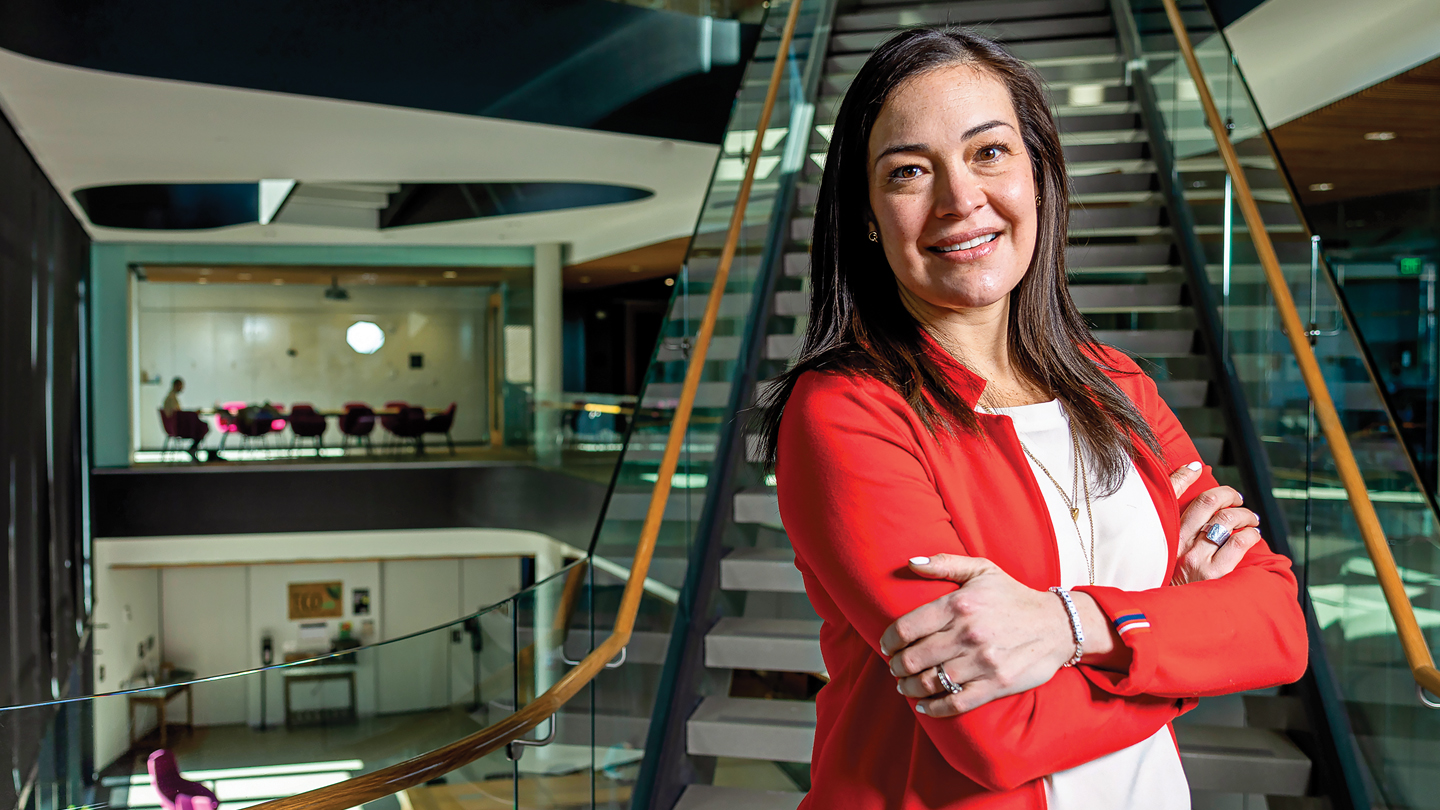Monika Serrano-Riedlinger ’04
 Climate resiliency project manager
Climate resiliency project manager
Turner Construction Co.
Monika Serrano-Riedlinger had been working for Turner Construction Co., headquartered in New York, one of the largest construction contractors in the United States, for about a decade, learning the ins and outs of the industry, when she was awakened to the fact that 40% of greenhouse gases come from the construction and operation of buildings.
“I saw an opportunity and decided that I wanted to spend the rest of my career helping climate change via buildings,” she says. “There is a huge opportunity here. We can both mitigate the effects of climate change and adapt to them by the way that we build buildings.”
 At the time, Turner had only one position devoted to addressing climate change issues. But the company was hearing from more clients demanding more sustainable designs in existing and planned buildings, and more positions began to open up.
At the time, Turner had only one position devoted to addressing climate change issues. But the company was hearing from more clients demanding more sustainable designs in existing and planned buildings, and more positions began to open up.
With the 40% figure still firmly planted in her mind, Serrano-Riedlinger, who had served as Turner’s regional sustainability manager for Pennsylvania and New Jersey, applied for and got the newly created climate resiliency project manager position when it opened two years ago.
Resiliency in the construction trade takes on many meanings, and Serrano-Riedlinger takes a sweeping view of it whenever she approaches a project. Protecting buildings against the effects of extreme weather—intense heat, rising sea levels, and severe storms such as hurricanes and tornadoes—is among the key areas she considers.
“The challenge is how to adapt to all of those disasters and build our buildings in a way that we adapt to them,” she says. “If you’re in coastal south Florida, buildings should be designed to accommodate water in basements and first floors. If the building is in California, the HVAC system should be designed in a way that it can deal with poor air
quality when there are wildfires nearby. So resilience is very unique to the locality.”
The use of the building also matters; it may be acceptable for a commercial building to not have electrical or water service for some time but not OK for a hospital or a data center because the consequences can be enormous, Serrano-Riedlinger says.
It’s also about the resiliency of the people working on the projects.
“If we’re not resilient as human beings adapting to new conditions—think of COVID—we won’t be a resilient organization to address and solve these greater issues,” Serrano-Riedlinger says.
Her company’s involvement in renovating the historic Commonwealth Pier in Boston comes to mind immediately. Dating back to the early 20th century, the waterfront pier, originally the center of the American wool trade and a port of entry for immigrants, is being renovated into a new office complex space with sustainable and resilient design elements.
“It’s right on the water. It’s not even like next to the water, it’s literally built over the water,” she explains. “And it’s as long as the Empire State Building is tall, two stories, and wide.”
Supported by Boston’s strong resiliency planning requirements and the client’s shared interests in renovating for the future, Turner is installing concrete pilings to strengthen the foundations, elevating the first floor to be occupied, and building a floodwall around the perimeter of the property. The plan is to protect Commonwealth Pier from rising sea levels and intense coastal storms, and prolong its usefulness for decades to come.
Another example is Coney Island Hospital, another project of Serrano-Riedlinger’s firm, which received heavy damage in Superstorm Sandy in October 2012. Critical equipment, including generators and utility transformers, which had been on basement level, have been moved to the hospital’s fifth floor to protect them from storm surges and other extreme weather.
Restoring buildings with resilient features not only helps protect the buildings but also mitigates effects of climate change by preventing storm-related damage that could cause a costly environmental cleanup.
“Resilient buildings don’t require being repaired and rebuilt as much as non-resilient buildings, and hence less construction materials with embodied carbon are needed,” she notes. “In this way, resilient buildings can be sustainable.”
In 2019, Turner launched a goal to reduce the greenhouse gas emissions and water consumption of its on-site construction operations by 50% by 2030. Another effort is putting focus on reducing embodied carbon, which refers to carbon emitted during the extraction, manufacturing, transportation, and installation of building materials.
Ever hopeful for a future where net zero buildings designed for future climate are the norm, Serrano-Riedlinger says outside forces continue to drive the construction industry toward sustainability and resiliency. “Younger generations are pushing us and getting us outside of our comfort zone,” she says.
Serrano-Riedlinger admits that her own interests in the construction industry have shifted during her nearly 20 years with Turner.
“I’m not as passionate about pouring concrete and setting steel,” she smiles. “But I do find passion in incorporating sustainability and resiliency in what we do. That stems from the fact that I think climate change is one of the biggest problems of our society. And so it’s all about being part of that solution, instead of just getting depressed about it.”